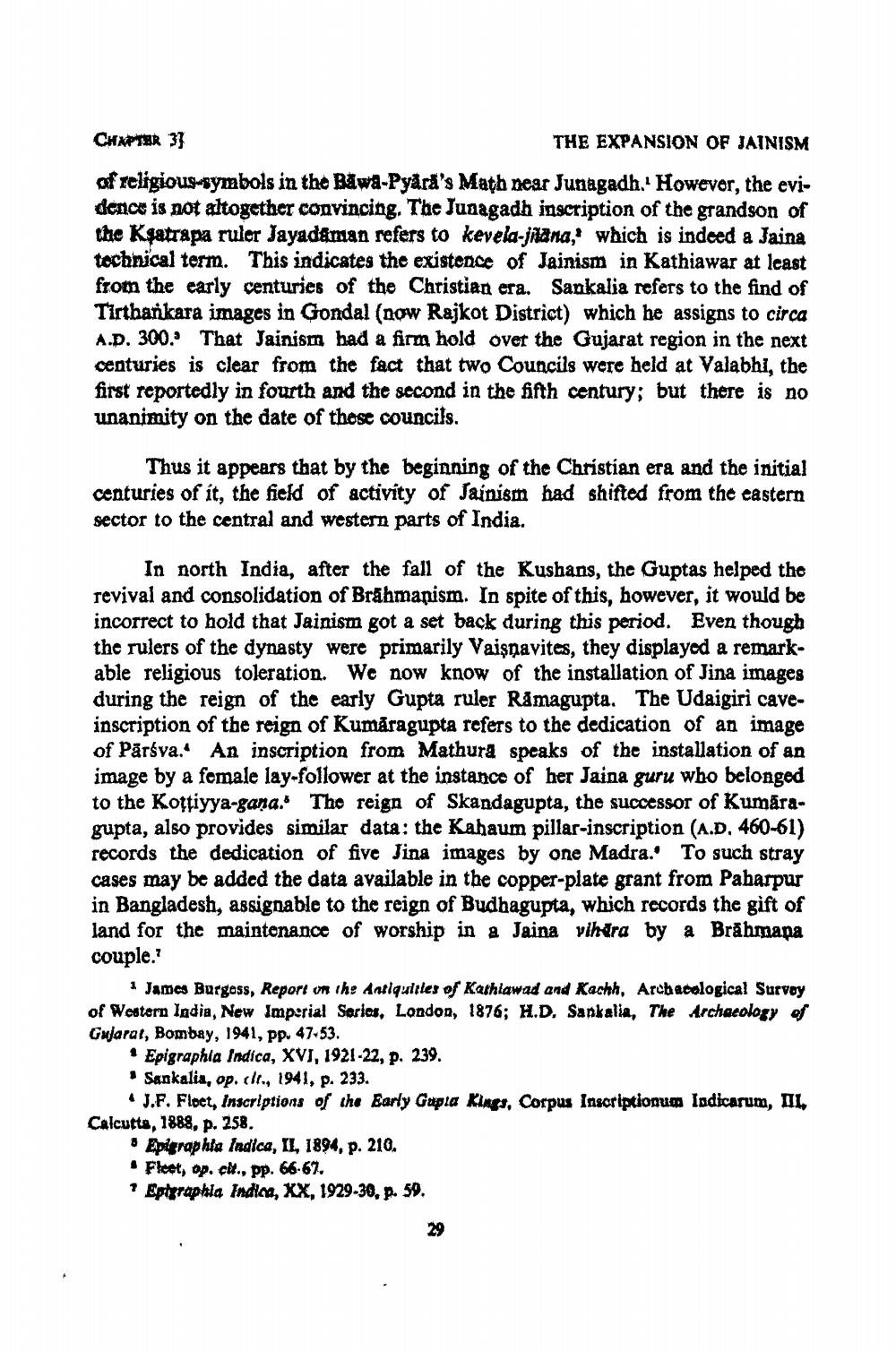________________
CHAPTER 31
THE EXPANSION OF JAINISM
of religious-symbols in the Bawa-Pyara's Math near Junagadh. However, the evidence is not altogether convincing. The Junagadh inscription of the grandson of the Ksatrapa ruler Jayadaman refers to kevela-jiana, which is indeed a Jaina technical term. This indicates the existence of Jainism in Kathiawar at least from the early centuries of the Christian era. Sankalia refers to the find of Tirthankara images in Gondal (now Rajkot District) which he assigns to circa A.D. 300. That Jainism had a firm hold over the Gujarat region in the next centuries is clear from the fact that two Councils were held at Valabhi, the first reportedly in fourth and the second in the fifth century; but there is no unanimity on the date of these councils.
Thus it appears that by the beginning of the Christian era and the initial centuries of it, the field of activity of Jainism had shifted from the eastern sector to the central and western parts of India.
In north India, after the fall of the Kushans, the Guptas helped the revival and consolidation of Brahmanism. In spite of this, however, it would be incorrect to hold that Jainism got a set back during this period. Even though the rulers of the dynasty were primarily Vaisnavites, they displayed a remarkable religious toleration. We now know of the installation of Jina images during the reign of the early Gupta ruler Råmagupta. The Udaigiri caveinscription of the reign of Kumaragupta refers to the dedication of an image of Pārsva. An inscription from Mathura speaks of the installation of an image by a female lay-follower at the instance of her Jaina guru who belonged to the Kottiyya-gana. The reign of Skandagupta, the successor of Kumaragupta, also provides similar data: the Kahaum pillar-inscription (A.D. 460-61) records the dedication of five Jina images by one Madra. To such stray cases may be added the data available in the copper-plate grant from Paharpur in Bangladesh, assignable to the reign of Budhagupta, which records the gift of land for the maintenance of worship in a Jaina vihara by a Brahmana couple.'
1 James Burgess, Report on the Antiquities of Kathiawad and Kachh, Archaeological Survey of Western India, New Imperial Series, London, 1876; H.D. Sankalia, The Archaeology of Gujarat, Bombay, 1941, pp. 47-53.
⚫ Epigraphia Indica, XVI, 1921-22, p. 239.
Sankalia, op. cit., 1941, p. 233.
J.F. Fleet, Inscriptions of the Early Gupta Kings, Corpus Inscriptionum Indicarum, III Calcutta, 1888, p. 258.
* Epigraphia Indica, II, 1894, p. 210, Fleet, op. cit., pp. 66.67.
7 Epigraphia Indica, XX, 1929-30, p. 59.
29




